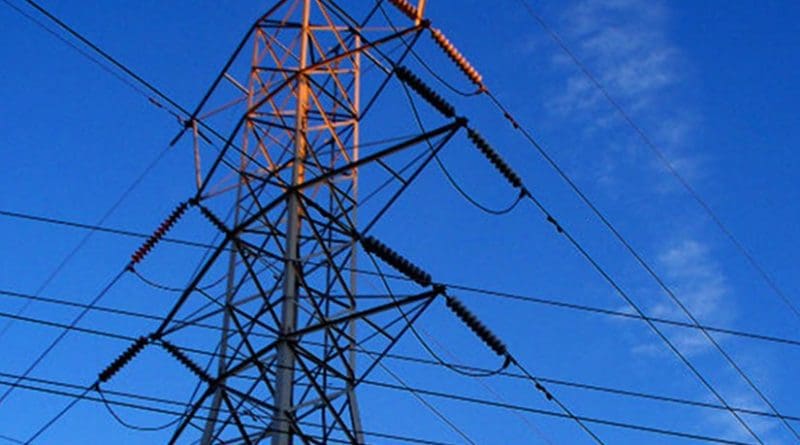Investors Are Backing Uranium For Reliable Emission Free Electricity – OpEd
By Ronald Stein
As a reaffirmation of what Abraham Lincoln said back in 1858, “You can fool all the people some of the time, and some of the people all the time, but you cannot fool all the people all the time”, investors are not being fooled by the rhetoric that weather can provide for our electricity needs.
Share prices in uranium miners are on the rise, much to the horror of the weather dependent wind and solar industries.
The market seems to be taking the threat of looming net-zero emissions targets seriously. Knowing that the only serious measure of meeting any such target is nuclear power, the smart money is backing any company with uranium mining interests or even the mere prospect of developing such an interest.
Canadian-based commodity fund manager Sprott has created a fund that owns physical uranium on the outlook for uranium demand due to it being a clean energy source that is not intermittent, and not weather dependent. Investors are salivating at the role nuclear will play in the shift away from fossil fuels to attain mid-century zero emission targets.
For now, the spot price for uranium remains reasonably flat. Uranium stocks are taking off on the back of the possibility of an inflection point in 2024-25, where demand is likely to exceed supply. Why?
- Older reactors in the US that were previously scheduled for closure are likely to have life extensions.
- China is significantly increasing its nuclear capacity by 40 percent in just the next few years, projected to rise from 50GWe (gigawatts electric power) to 70GWe by the end of 2025.
- New nuclear technology is enabling countries and industries that have never made use of it, due to much smaller plants.
Despite the falling cost of weather dependent wind and solar, and pressure on governments to act on climate change, as reported by Reuters, the worlds energy usage reflects that most of the world have not bought into the messages that weather is a realistic solution for electricity as the share of fossil fuels in the world’s total energy mix is as high as a decade ago,
At present, with wind and solar electricity accounting for only about 7 percent of global electricity generation, and electric vehicles making up less than one percent of the cars on the road, the production of those “green” minerals and metals is roughly adequate to only meet the current small global demand.
Politicians and movie stars, having easy access to microphones, verbalize that the weather can provide all the worlds electricity via weather dependent solar and wind generation. As a result of the power (no pun intended) of the microphone, huge amounts of taxpayer’s monies are being committed to subsidize weather dependent industries for electricity.
If, however, the governments in the U.S. and other countries really do move toward a future based on weather for electricity envisioned by President Biden, the demand for those minerals and metals will skyrocket and global output will fall far short of anticipated needs and result in extensive environmental and humanity atrocities by exploiting the most vulnerable people and environments globally.
According to a recent study by the International Energy Agency (IEA), “The Role of Critical Minerals in Clean Energy Transitions,” the demand for lithium in 2040 could be 50 times greater than today and for cobalt and graphite 30 times greater if the world moves swiftly to replace oil-driven vehicles with EVs. Such rising demand will, of course, incentivize industry to develop new supplies of such minerals, but potential sources of them are limited and the process of bringing them online will be costly, complicated, and environmentally challenging.
So far, land usage for weather dependent wind and solar has been in remote areas where few live, but to generate great volumes of electricity will require encroaching into areas where people live, and that alone is being met with huge resistance from residents.
Worldwide, as a result of nuclear generation ability to provide continuous uninterruptable zero emission electricity, and the track record of nuclear safety, today there are about 440 nuclear reactors operating in 32 countries around the world with 50 more new ones under construction. Significant further capacity is being created by plant upgrading of existing reactors.
Nationally, America has 93 nuclear reactors across 28 states. They generate one-fifth, a whopping 20 percent of the country’s electricity, emission free. California however has opted to shutter its last zero emission electrical generating plant at Diablo Canyon despite a decision April 25, 2019 by the Public Utility Commission (PUC) of the State of California, overwhelmingly approved by the Legislature and signed by Brown, ordering regulators to “avoid any increase in emissions of greenhouse gases” as a result of Diablo’s closure.
The nuclear future just got brighter as billionaire Bill Gates‘ advanced nuclear reactor company TerraPower LLC and PacifiCorp have selected Wyoming to launch the first Natrium reactor project on the site of a retiring coal plant. “Together with PacifiCorp, we’re creating the energy grid of the future where advanced nuclear technologies provide good-paying jobs and clean energy for years to come,” said Chris Levesque, president, and CEO of TerraPower. “The Natrium technology was designed to solve a challenge utilities face as they work to enhance grid reliability and stability while meeting decarbonization and emissions-reduction goals.”
With the massive land requirements for weather dependent wind and solar, and the international environmental degradation and humanity atrocities being experienced with the mining for exotic minerals and metals required, investors are betting that zero-emission electricity generation from nuclear is the trend to meet the world’s growing needs for electricity.

